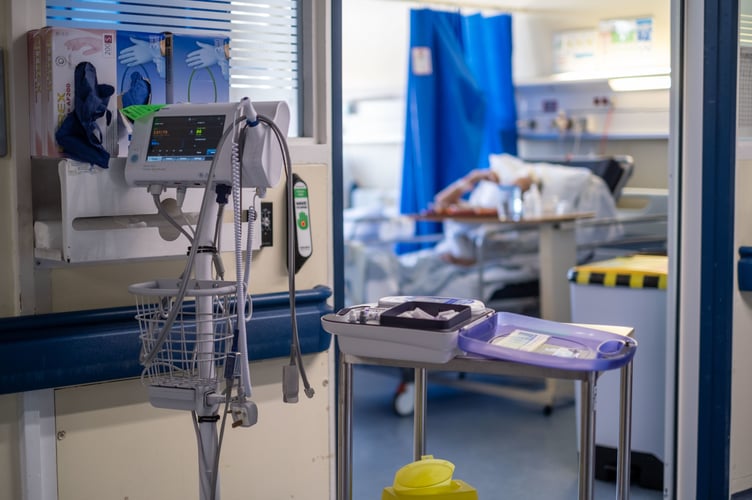Fewer treatments were outstanding for a year or longer at Royal United Hospitals Bath as of August, new figures show.
The NHS set a target of eliminating waits of more than a year by March 2025.
The latest figures for England show the backlog has been cut significantly, but suggest the health service may struggle to hit that target.
Figures from NHS England show there were 37,500 outstanding treatments at Royal United Hospitals Bath NHS Foundation Trust – 748 (2%) of which had been waiting for a year or more.
This was a 55% fall from 1,647 a year earlier.
The largest number of year-long waits at the trust were for gastroenterology services, with 209 outstanding treatments.
This was followed by ear nose and throat services, with 168 treatments.
Across England, the number of year-long waits has fallen by 28%, with around 282,700 outstanding treatments as of August. A year earlier, this stood at 395,200, with a peak of 436,100 in March 2021.
During the same period, the overall waiting list has fallen by less than 1%, showing the backlog in longer waits is being tackled more quickly.
Danielle Jefferies, a senior analyst at the King’s Fund, said the strong national focus on tackling longest waits has “paid off”, particularly thanks to the extra work doctors have put in working weekends and opening community diagnostic centres.
However, she said these waits are only a “small part of the story” in solving the health service’s problems – with the overall waiting list already significant before the pandemic.
Ms Jefferies added “it's not just about these waiting lists, but who is waiting”. She would like to see the problem tackled inclusively, adding these long waits are disproportionately for women's health services.
Across England, gynaecology was the third largest reason patients were waiting for more than a year, with only ear, nose and throat services, and trauma and orthopaedics seeing more waits for treatment.
Nuffield Trust researcher Cyril Lobont said progress has been mixed – while longer waits have been on the decline, the NHS may miss its target of eliminating the longest waits by early next year.
“The NHS objective was to eliminate 65-week waits by September, but they have only gone from 49,000 in March to 46,000 in August,” he added.
“Meanwhile, in August, waits of over a year were at the lowest level since the start of the pandemic. But the goal to eliminate these waits by March 2025 will be incredibly difficult to meet given the rate at which they have decreased so far this year.”
A Department of Health and Social Care spokesperson said: "This government inherited a broken NHS, with waiting lists sat at record highs and too many patients facing a postcode lottery, waiting far too long to be diagnosed and treated.
“Our 10-Year Health Plan will fundamentally reform the health system through three big shifts – from hospital to the community, analogue to digital and sickness to prevention.”
They continued: “We will cut waiting lists, delivering 40,000 more appointments a week, and we will create a healthier society while ensuring patients receive the highest quality care when and where they need it.”



